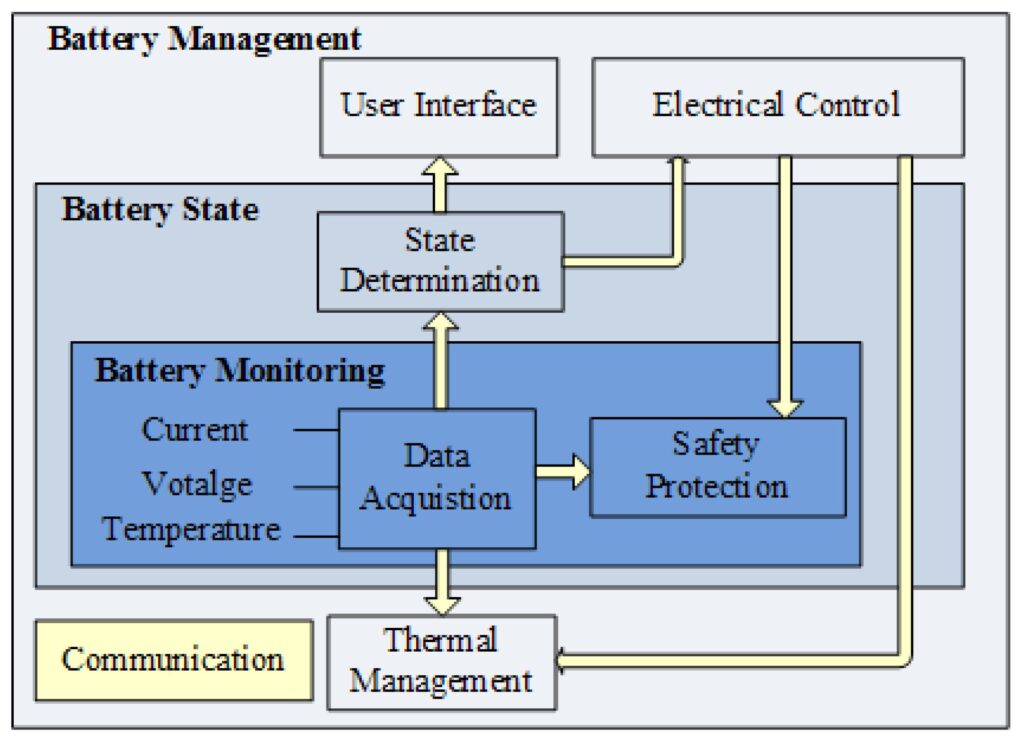In this article, we will talk about one of the important elements of the electric vehicle, namely the battery management system (BMS). the battery management system is a very important part of the electric car, and it performs much more functions than just managing the battery. BMS is the brain of the battery pack. This system is able not only to provide data exchange with the charger but also to regulate the operation of the batteries in such a way as to maximize their performance in various conditions, as well as inform the user about the degree of their legal capacity.
Let’s take a closer look at what a BMS is. Let’s start!
Importance of a BMS in an Electric Vehicle

Batteries of electric vehicles consist of a plurality of series-connected accumulators, which cannot be identical in mass production. Capacity, internal resistance, self-discharge rate, and degradation of the same type of battery are always slightly different. This effect is most characteristic when the battery is divided into several modules of batteries connected in series and placed in different compartments of the electric vehicle in the engine compartment, in the luggage compartment, in the passenger compartment, or under the bottom and suchlike.
With prolonged use of the battery, the problem of the imbalance arises. We propose to analyze the negative impact of battery imbalance using an example.
Let’s imagine a situation: during the movement of an electric vehicle, the voltage on one of the battery cells dropped to a predetermined lower level, below which irreversible battery degradation can occur, that is, this cell or module is discharged.
In this case, the safety system of the electric vehicle will open the battery discharge circuit and the electric vehicle will not be able to continue driving. But after all, individual cells were still not completely discharged. And this indicates an inefficient use of the battery.
In the future, when operating such a battery, we will not receive full capacity, that is, our electric car will be able to travel a shorter distance. Moreover, due to the uneven distribution of charge, the battery will quickly become unusable.
BMS battery management system makes it possible to avoid the negative destructive processes in the battery. The control system ensures that all cells receive equal voltage at the end of charging. As the charging process comes to an end, and BMS makes balancing by shunting the charged cells. It can also transfer the energy of elements with a higher voltage to elements with a lower voltage.
Shunt – a device that allows the electric current or magnetic flow to flow bypassing any part of the circuit, usually a low-resistance resistor, coil, or conductor. With passive balancing, the cells that completely replenish the charge receive less current or are excluded from the charging process until all the battery cells have an equal voltage level.
The battery management system maximizes the battery life balancing and also providing temperature control and several other functions that we will now analyze.
Main objectives of the application of BMS
Let’s consider the main objectives of the application of BMS
- Protection of battery cells and the whole battery from damage.
- Increased battery life.
- Maintaining the battery in the state in which completing all the tasks assigned to it becomes possible.
To achieve these goals, the BMS must perform the following functions.
Monitor the state of the battery cells
- Voltage: total voltage, the voltage of individual cells, minimum and maximum cell voltage Then
- Temperature: average temperature, electrolyte temperature outlet temperature, the temperature of individual battery cells, BMS boards. The BMS electronic board is equipped with both internal temperature sensors and external ones, which are used to control the temperature of specific battery cells.
- Charge and depth of discharge: Charge/discharge currents and serviceability. The control system can store in memory such indicators as the number of charge/discharge cycles, the maximum and minimum voltage of the cells, the maximum and minimum value of the charge and discharge current. These data make it possible to determine the state of the battery’s operability. An incorrect charge is one of the most common causes of battery failure, therefore, charge control is one of the main functions of the BMS microcontroller.
Intelligent computing
- The maximum allowable charge current.
- The maximum permissible discharge current: the amount of energy supplied as a result of charging or lost during discharge the cell internal resistance and the total number of work cycles.
- Connective: the BMS shares the data listed in the previous function. BMS can transmit data through both wired and wireless communication.
- Protective: the BMS protects the battery from overcurrent, overvoltage. during charging, voltage drops below the permissible level during discharge overheating hypothermia current leakage. Battery Management System disconnects the battery from the load or the charger when at least one of the operating parameters exceeds the permissible range.
- Balancing: Balancing is a method of evenly distributing the charge between all cells of the battery, due to which the battery life is maximized. To protect the BMS board from the negative effects of moisture and dust, it is coated with a special epoxy sealant. Not always batteries have only one control and balancing system. Sometimes, instead of a single BMS board, several regulatory electronic boards connected are used at once, each of which controls a certain number of cells and supplies the output data to a single controller.
As you can see, this system is vital for an electric car since the functionality of BMS allows not only to improve the operating mode of batteries but also to maximize their service life.
The architecture of the battery management system for each manufacturer is different. BMS can be designed using a variety of function blocks and design methods. The overall battery management system is illustrated on the screen.
Summary
The Battery Management System BMS is an electronic system that:
- Controls the charge/discharge process of the battery.
- Responsible for the safety of the battery.
- Monitors battery status.
- Assesses secondary health data.
- Conducts individual control of voltage and resistance of each battery element.
- Distributes currents between the components of the battery during the charging process.
- Guarantees safe connection/disconnection of the load.
By the way, when recovering energy, BMS also regulates the process of recharging the battery.
You may also like to read: Current Transducers In EVs and HEVs



